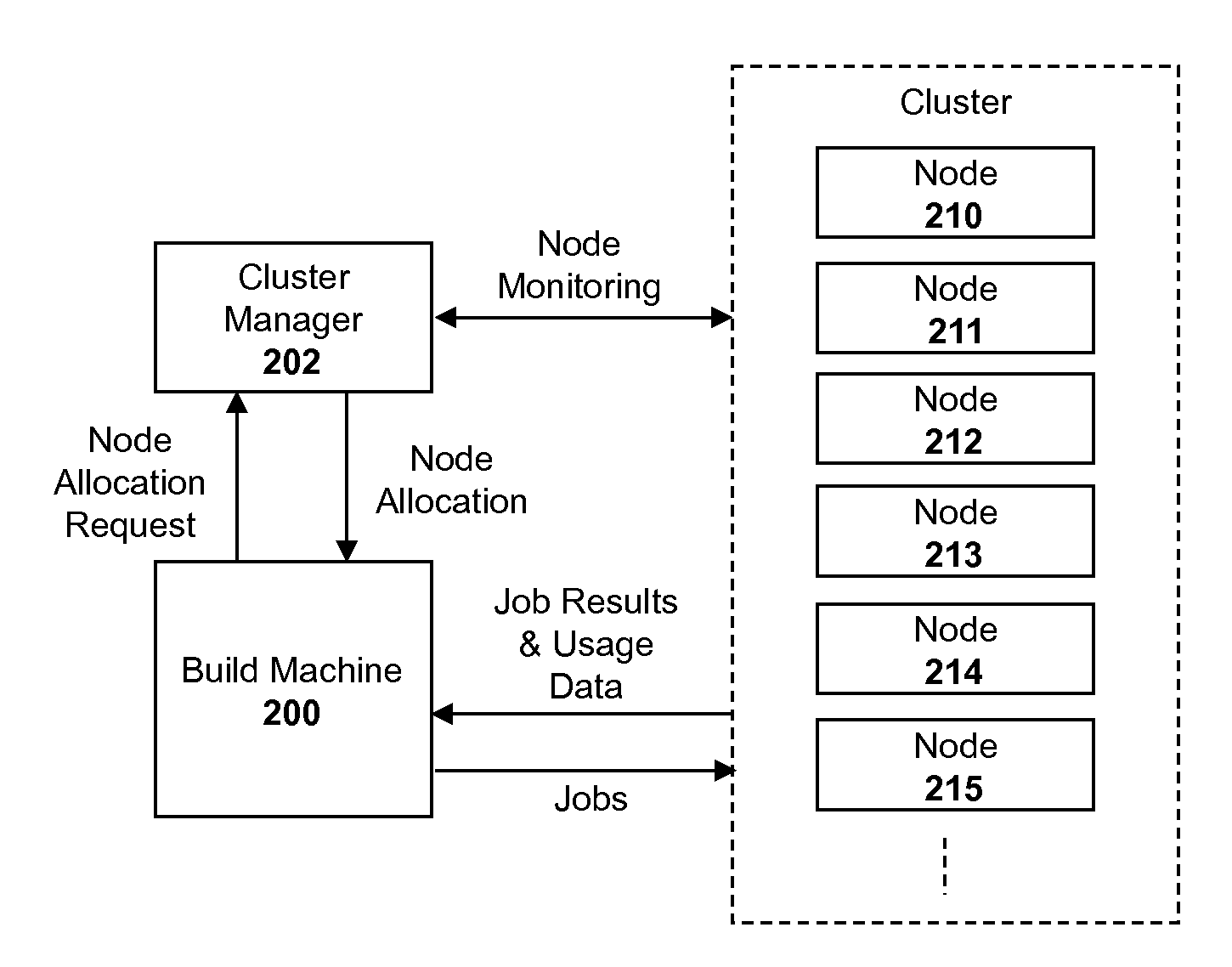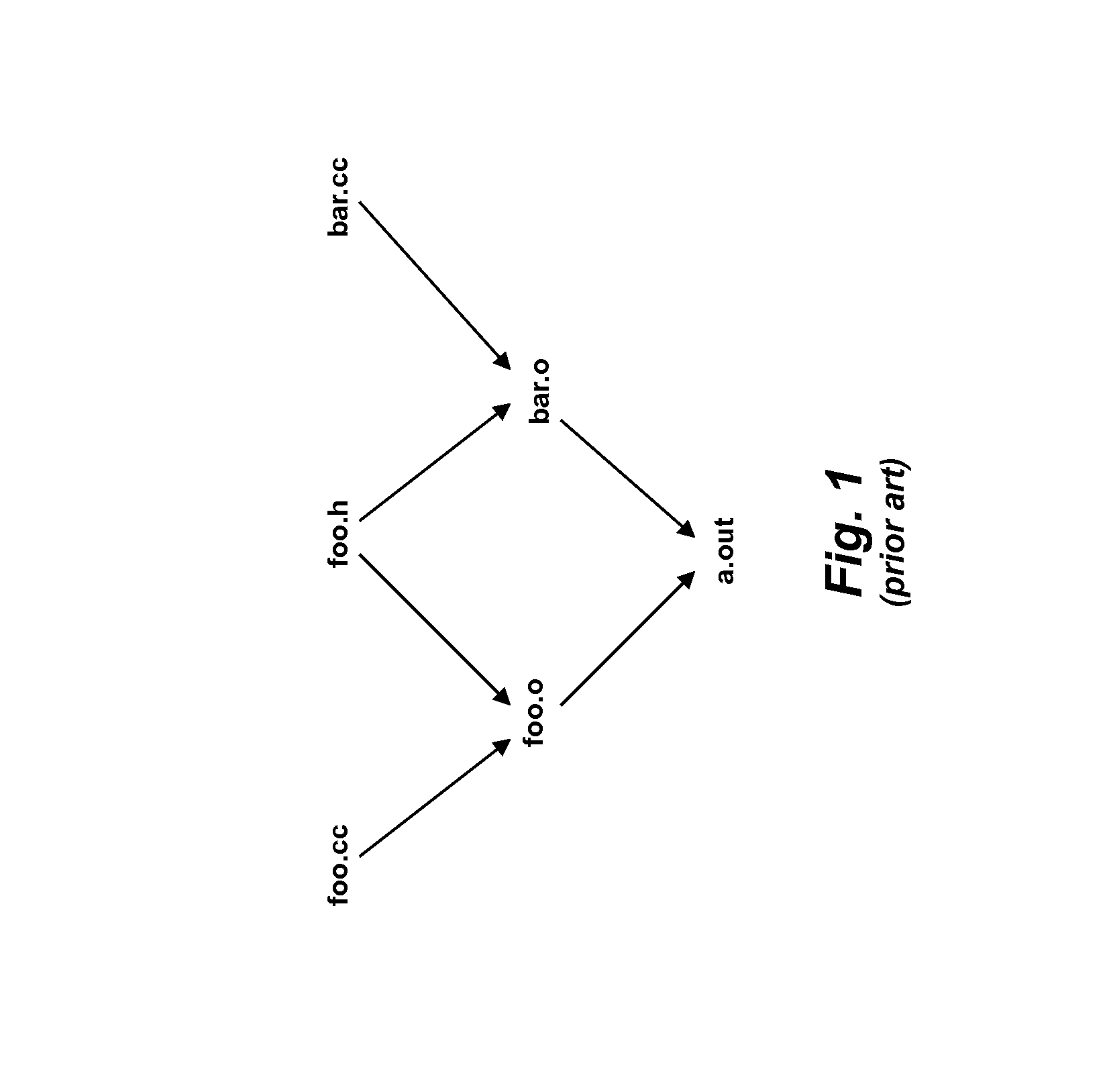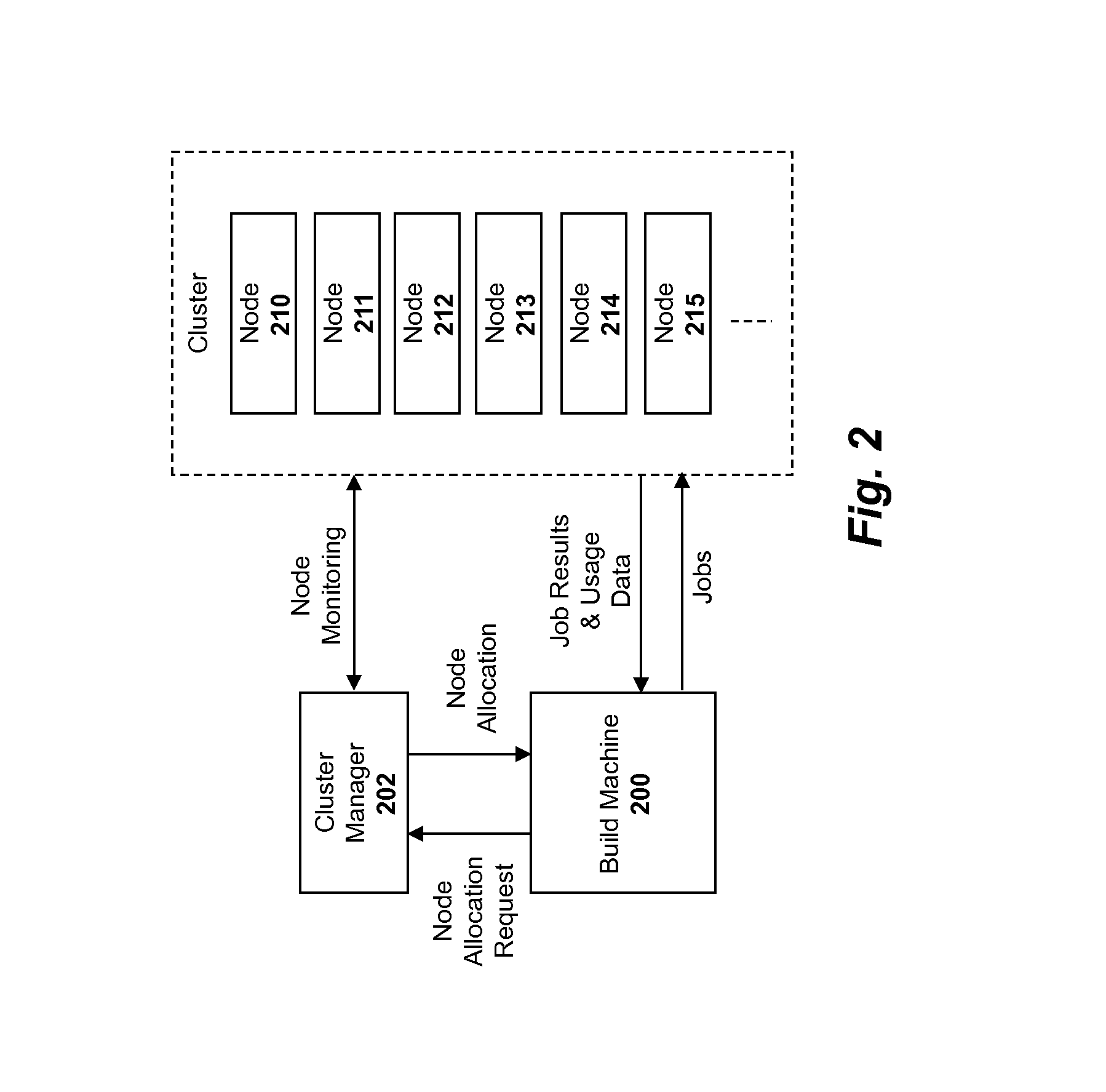System and method for optimizing job scheduling within program builds
a software build and job scheduling technology, applied in the field of computer aided software engineering, can solve the problems of unsatisfactory dependency information in makefiles, complex dependency structure, and added complexity to the build process
- Summary
- Abstract
- Description
- Claims
- Application Information
AI Technical Summary
Benefits of technology
Problems solved by technology
Method used
Image
Examples
Embodiment Construction
[0045]In the following description, for the purposes of explanation, numerous specific details are set forth in order to provide a thorough understanding of the present invention. It will be apparent, however, to one skilled in the art that the present invention may be practiced without some of these specific details. In other instances, well-known structures and devices are shown in block diagram form to avoid obscuring the underlying principles of the present invention.
[0046]The assignee of the present application has developed a variety of techniques for enabling parallel execution of program builds including supplementing program builds with file usage information, detecting and correcting conflicts between jobs, caching frequently used files on the nodes which will process those files, and techniques for processing recursive program build invocations. These techniques are described, for example, in the following issued US patents (hereinafter “issued US patents”):
[0047]SYSTEM A...
PUM
 Login to View More
Login to View More Abstract
Description
Claims
Application Information
 Login to View More
Login to View More - R&D
- Intellectual Property
- Life Sciences
- Materials
- Tech Scout
- Unparalleled Data Quality
- Higher Quality Content
- 60% Fewer Hallucinations
Browse by: Latest US Patents, China's latest patents, Technical Efficacy Thesaurus, Application Domain, Technology Topic, Popular Technical Reports.
© 2025 PatSnap. All rights reserved.Legal|Privacy policy|Modern Slavery Act Transparency Statement|Sitemap|About US| Contact US: help@patsnap.com



